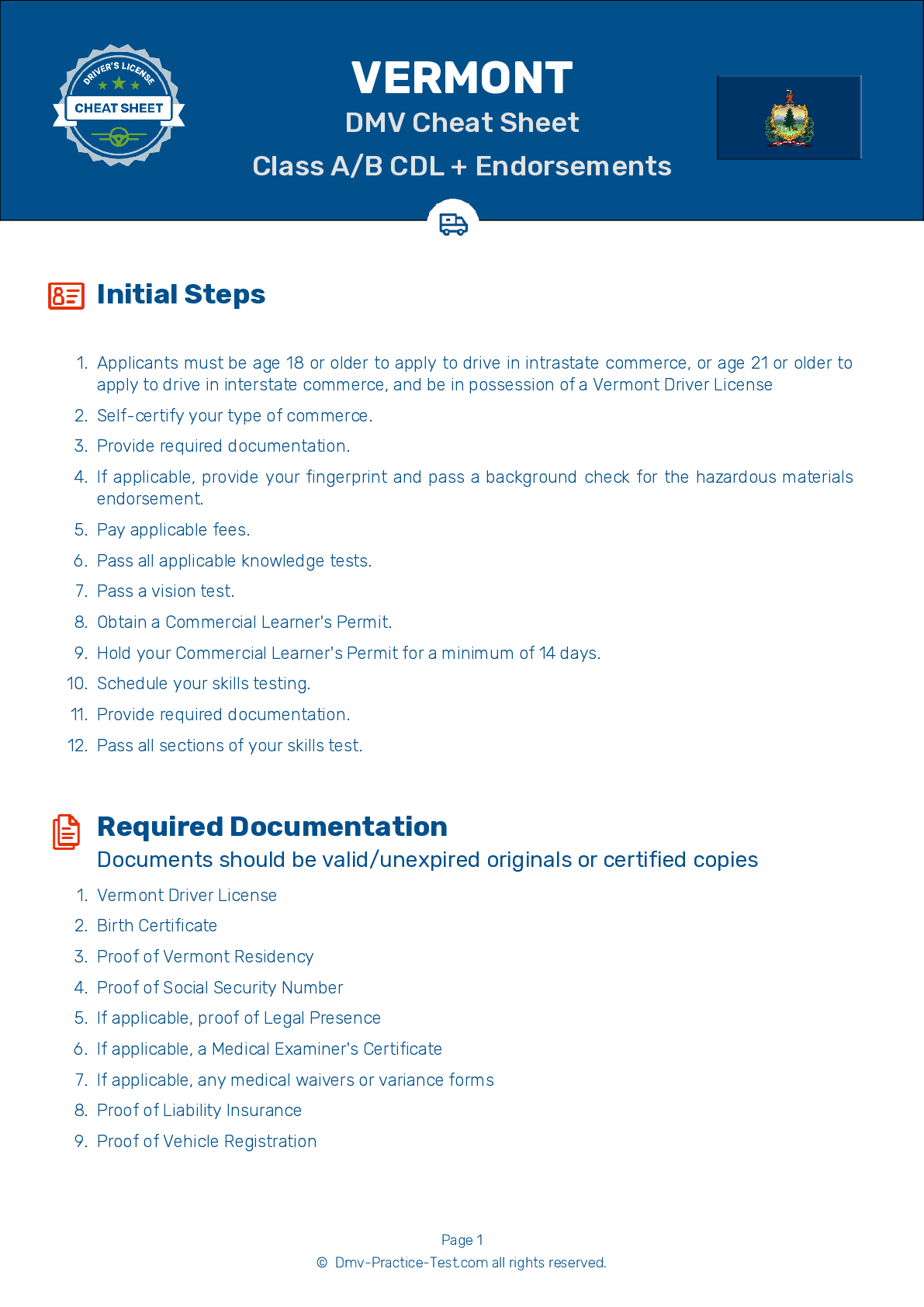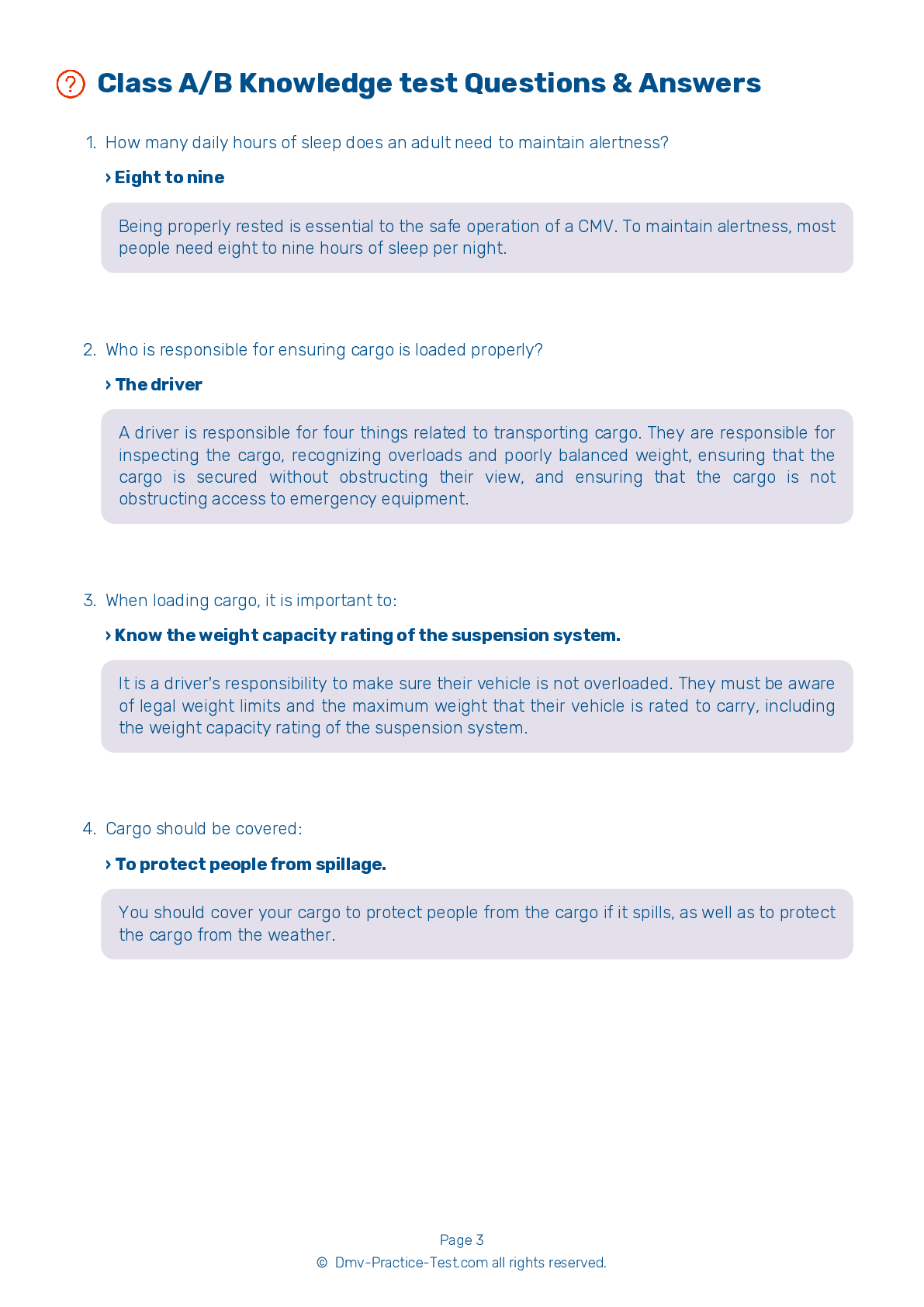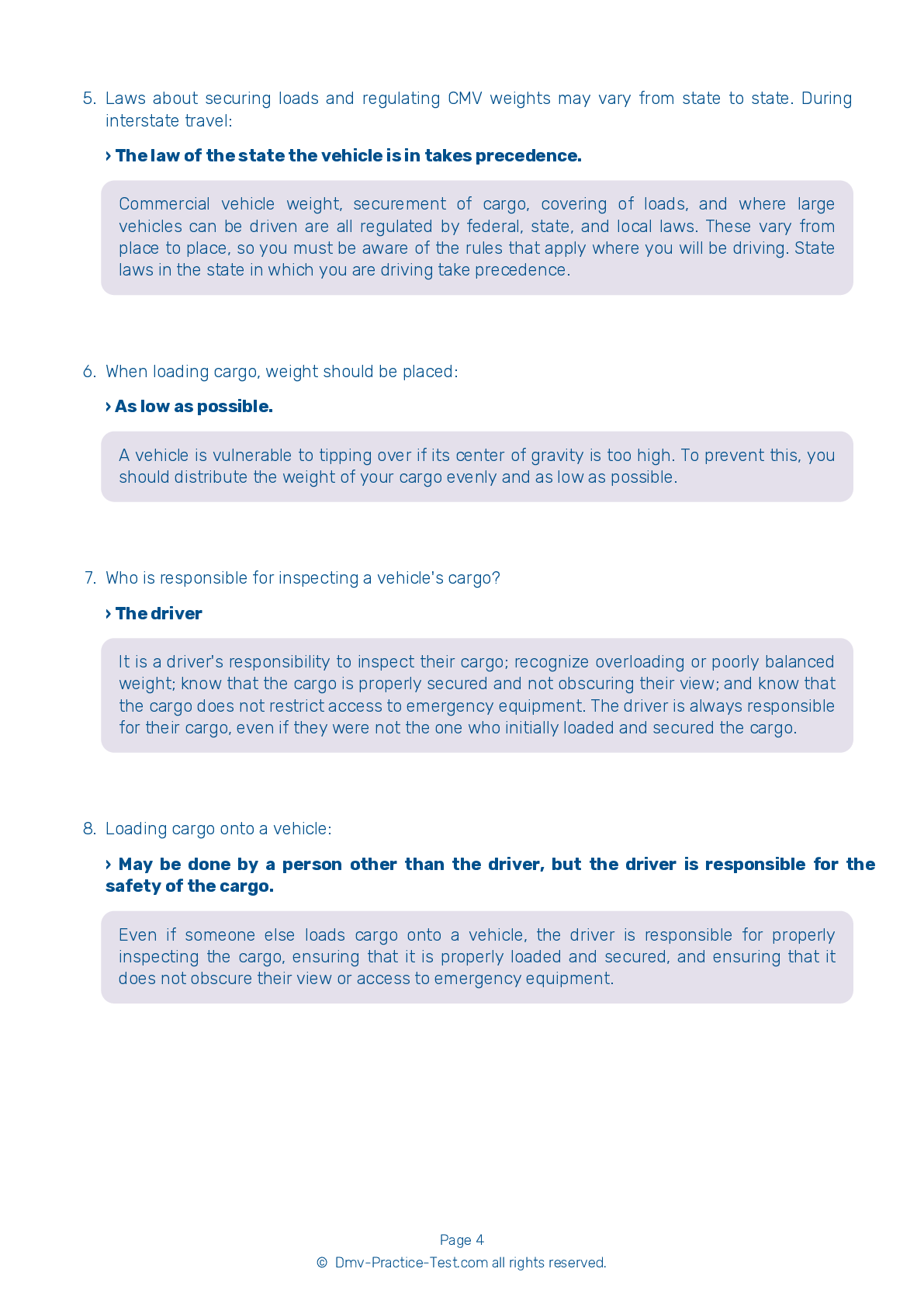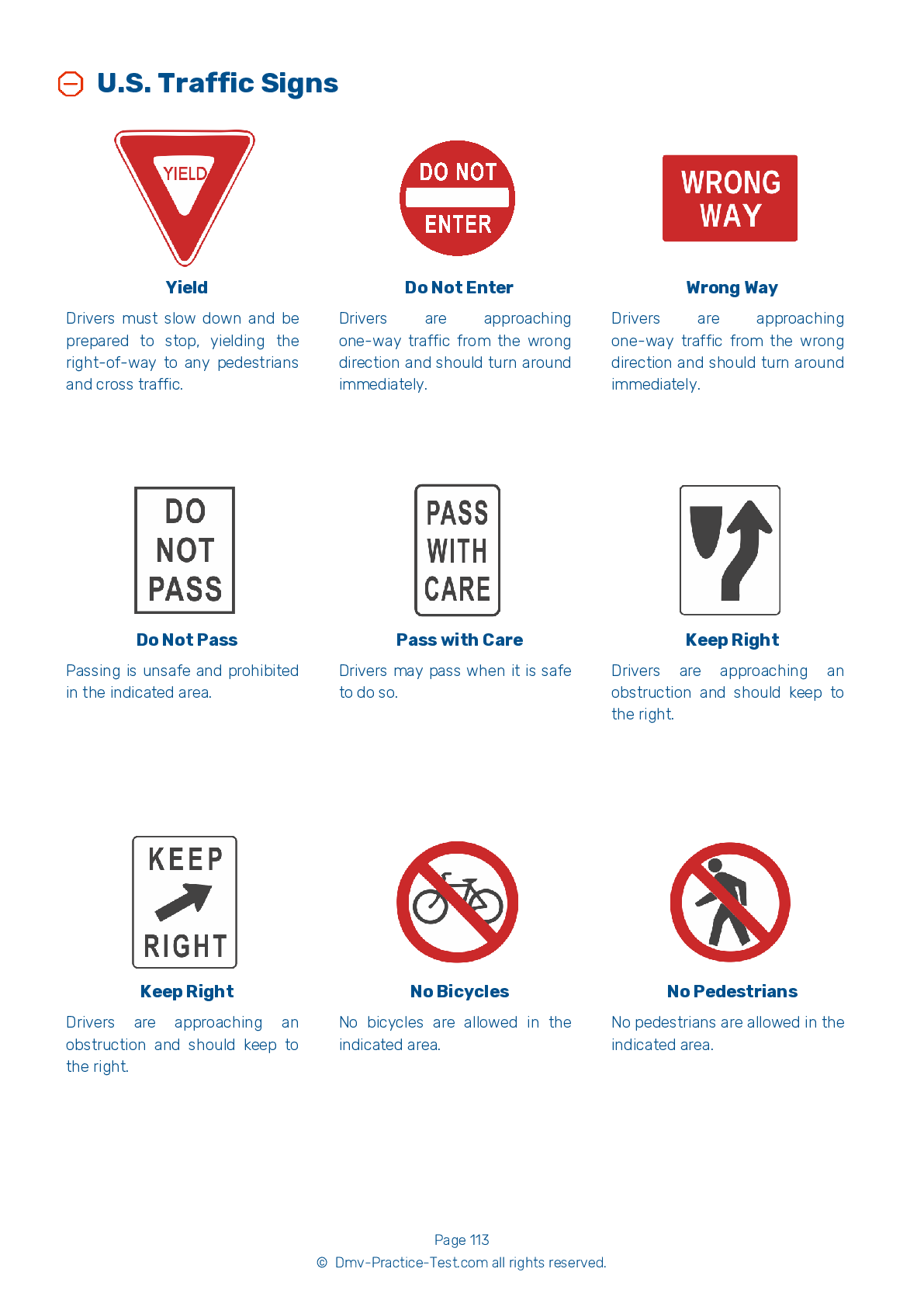Air Brakes #2
Air Brakes Endorsement Test | Vermont 2025 #2 Page 3 of 4
Train for FREE online with our Vermont CDL air brake test. The official exam test consists of several obligatory parts, with all of them checking your knowledge of different blocks of road rules. If you need to obtain a VT Class A/Class B driver license in 2025, practice as much as possible. Free sample tests published on our website will help you check and improve your knowledge and boost your grades. Please bear in mind that the requirements for CDL may vary from state to state.
25
20
20
13 . During an applied leakage test, what is the maximum leakage rate that is safe for a single vehicle with air brakes?
It is important to know the maximum air loss rate that is safe for your specific vehicle. A single vehicle with air brakes should have a leakage rate no higher than 3 psi in a minute during an applied leakage test.
14 . What is removed when an air tank is drained?
In an air brake system, air tanks have drains to remove accumulations of water and compressor oil. Allowing water and oil to accumulate in the system could cause damage to the brakes.
15 . What can happen if the air pressure gets too low in an air brake system?
Pressing and releasing the brake pedal unnecessarily can let air out of the braking system faster than the compressor can replace it. Air brakes may cease to work effectively if the pressure becomes too low.
16 . In a vehicle with dual parking control valves, a separate air tank can be used:
In a vehicle with dual parking control valves, there is a separate air tank that can be used to temporarily release the spring brakes if they have been activated due to low air pressure. Pushing in the proper control will release the spring brakes for a short period of time, allowing the driver to move the vehicle in an emergency.
17 . The ____ between an air compressor and reservoir tank prevents air from escaping if the air compressor has a leak.
A one-way check valve is required to be between an air compressor and the first main reservoir. This valve prevents air from escaping the system if the air compressor develops a leak.
18 . What color malfunction lamps do vehicles equipped with ABS have?
Anti-Lock Braking System (ABS) malfunction lamps are usually yellow. Even if the ABS isn't working properly, a driver will still have access to the vehicle's usual braking functions.
2025 Vermont | Frequently Asked Questions
In Vermont, to acquire a CDL Hazmat endorsement, you need to pass a written knowledge test. Prior to the test, you should study the Vermont Commercial Driver's Manual's Hazardous Materials section. You'll also need to undergo a federal background check and fingerprinting. Lastly, you must provide proof of U.S. citizenship or lawful permanent residency.
To obtain a CDL Hazmat license, you must already possess a Commercial Driver's License (CDL). You'll need to pass the Hazardous Materials Endorsement Knowledge Test, undergo a TSA background check, and provide fingerprints. Additionally, you must be at least 21 years old and provide proof of U.S. citizenship or lawful permanent residency.
When applying for a CDL Hazmat endorsement, you'll need to provide proof of U.S. citizenship or legal status, such as a birth certificate or green card. Also required is your Commercial Driver's License (CDL). You'll need to fill out a Hazardous Materials Endorsement application and provide fingerprints for the TSA background check.
Yes, there is a dedicated written test for the CDL Hazmat endorsement. This knowledge test focuses on the handling and transportation of hazardous materials. It is required to ensure drivers understand the safety protocols, regulations, and procedures associated with transporting hazardous substances. The test content can be found in the Hazardous Materials section of the Vermont Commercial Driver's Manual.
The written test for the CDL Hazmat endorsement covers a range of subjects related to hazardous materials transport. These include identifying hazardous materials, understanding shipping papers, placarding, loading and unloading, bulk packaging, driving and parking rules, emergencies, and the rules for each class of hazardous materials. It's designed to ensure safe and legal transportation of these materials.
Yes, there are additional charges associated with acquiring a CDL Hazmat endorsement. These include the cost of the written test, fingerprinting, and a background check. The total cost can vary, so it's advisable to check with the Vermont Department of Motor Vehicles for the most accurate and up-to-date fee information.
Yes, a background check and security clearance are mandatory for obtaining a CDL Hazmat endorsement. The Transportation Security Administration (TSA) conducts these checks to ensure the driver doesn't pose a security threat. This process involves fingerprinting and a review of criminal, immigration, and mental health records. The driver must also be a U.S. citizen or have legal status.
Yes, specialized training is required for the CDL Hazmat endorsement. This includes learning about hazardous materials regulations, emergency response procedures, and safe handling practices. After training, you must pass a written test to demonstrate your knowledge. Additionally, you must pass the TSA security threat assessment to get the Hazmat endorsement on your CDL.
No, you cannot legally transport hazardous materials without a valid CDL Hazmat endorsement in Vermont or any other U.S. state. This endorsement is required by federal law and ensures that drivers have the necessary knowledge and skills to safely transport hazardous materials. Violating this law can lead to serious penalties.
You can add the Hazmat endorsement to your current CDL license; a new application isn't necessary. However, you'll need to pass a written test and a TSA background check. Once these are completed and approved, the Hazmat endorsement will be added to your existing CDL. Remember, this endorsement must be renewed every five years, or according to your state's regulations.



